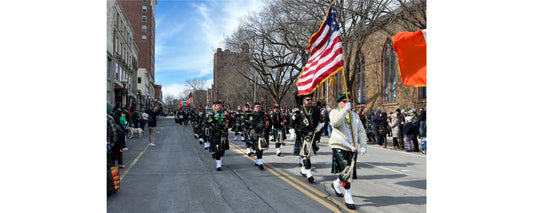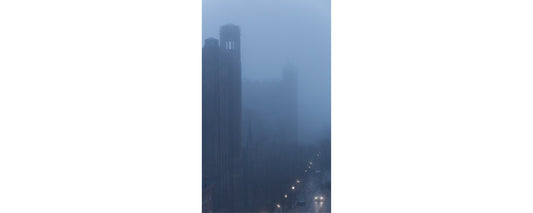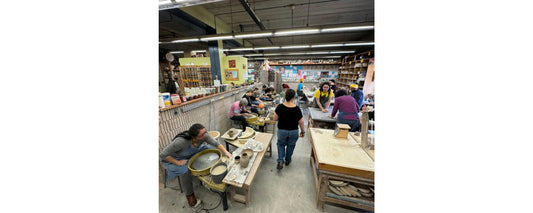Renowned prankster Alan Abel has lived in Connecticut for decades, mostly in Fairfield County. He doesn’t pretend to know New Haven well.
“When we made [the 1971 mockumentary film] Is There Sex After Death?, it was played for the Law School film society at Yale,” recalls the author of Confessions of a Hoaxer and the subject of a recent award-winning documentary. “Bush and Clinton would both have been students there then,” he notes, and wonders if they were at the screening. He also knew the esteemed jazz duo of French Horn player Willie Ruff (who studied at Yale following World War II, and has taught at the university since the early ‘70s) and pianist Dwike Mitchell “when we were in the service.” Abel picketed a segregated restaurant in Ohio until it had to close down, because it wouldn’t let Mitchell eat there.
Abel had no deep desire to prank New Haven or Yale. His preferred target over the past five decades or so has been the national news media, largely based in New York City. The Fourth Estate fell hard for such stunts as his Euthanasia Cruise (“What amazed me was how many people wanted to go on that trip!,” he says), the Society to Clothe Naked Animals (“It took off like a house on fire, especially when Walter Cronkite fell for it!”), his attempt to give Manhattan (or at least the deed for a one-foot-by-three-inch part of it) back to the Indians and his four-year-old, still-active Society to Protest Birdwatchers (on the grounds that the enthusiasts are voyeurs). Abel promoted the New York premiere of Is There Sex…? by hiring picketers to protest the film.
Now in his 80s, Abel sees himself as “a teacher” who has “used the media as a conduit to the public. I wanted the biggest possible classroom.”
When Abel visits New Haven on Sept. 11 to speak before a comparatively intimate audience at the historic Institute Library on Chapel Street, he will be part of a different sort of classroom tradition, one that thrived before mass media and that had a special distinction in New Haven.
Debate and discourse were a regular part of life in New Haven 150 years or so ago. It was during a stop on an international speaking tour in 1868 that Charles Dickens declared Hillhouse Avenue to be “the most beautiful street in America.” Dickens, had previously visited the city, and indeed spoken at the Institute Library, in the 1840s. Mark Twain, John Kendrick Bangs (who, in his time, was as famous a humorist a Twain, and whose son attended Yale and belonged to the Institute Library), and abolitionist Henry Ward Beecher were among the world-famous writers and orators who came to New Haven to share wisdom.
The new Amateur Hour series at the Institute Library was developed in order to revive what was once “the center of democratic intellectual and cultural life in the 19th century,” according to Joshua Foer, the journalist, Yale graduate and current New Haven resident who co-founded the series.
Yale was of course a major contributor to the loquacious cause of spirited public debate, but Foer lauds the Institute Library as “the place that was not Yale, where people who were not professors got together to discuss the issues of the day. When we were sitting down looking for ideas to reinvigorate the library, this was it.”
There’s another wrinkle to the Amateur Hour series. The speakers, Foer says, are “people who might not already have a platform. They are experts at what they do, not professionals.” For November, Foer—who alternates as host of Amateur Hour with another celebrated New Haven-based journalist, Jack Hitt—has booked a man known as “America’s best lockpicker. He does what he does not for criminal purposes but as a lost art.”
There’s an image of old New Haven that beautifully fits this idea of open, outspoken and occasionally unruly discussion commanding the center of the city. It’s the Old Yale Fence, which for much of the 19th century stood on the edge of the Yale campus bordering New Haven Green. (This was before that campus began to sprawl in all directions with its graduate schools.) The fence is depicted—in a plaque erected on the side of Bingham Hall, near the corner of Chapel and College streets, as well as in a famous painting by Alfred Cornelius Howland which hangs in Yale’s Sterling Library—as a hang-out for an assortment of students (all men, in those days) who are not just conspicuously well-dressed (from their top hats or derbies to their shined shoes) but conspicuously thoughtful-looking. The men look attentive, alert, engaged. Some are reading. They are eternal students, ready for dialogue.
History records that the Yale fence was not just an outpost of rarefied discussion. It was seen as a town/gown separation point, where Yalies and townies openly mocked each other. “The Institute Library is definitely on ‘the other side’ of that divide,” Joshua Foer says. He suggests that these were different cultures, but both were animated by discussion and debate. That’s the tradition he wants to resume with Amateur Hour.
“Why do it now, in person, in an old 19th century library? It’s always more exciting having it right in front of you.”
Amateur Hour #2: Hoax!
The Institute Library, 847 Chapel St., New Haven (map)
Today, September 11 at 7pm
(203) 562-4045
www.institutelibrary.org
Written and photographed by Christopher Arnott.







